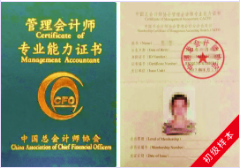职称英语考试综合类完形填空练习(14)
The Central Problem of Economics
The central problem of economics is to satisfy the people's and nation's wants.
The problem we are faced with is that our resources, here identified as money, are __1__. The only way we can resolve our problem is to make choices. After looking at our resources, we must examine our list of __2__ and identify the things we need immediately, those we can postpone, and __3__ we cannot afford. As individuals, we face the central problem involved in economics-deciding just how to allocate our limited our limited resources to provide __4__ with the greatest satisfaction of our wants.
Nations face the same problem. As a country's population ___5__, the need for more goods and services grows correspondingly. Resources necessary to production may increase, but there __6__ are enough resources to satisfy the total desires of a nation. Whether the budget meeting is taking place in the family living room, in the conference room of the corporation __7__ of directors, or in the chamber of the House of Representatives in Washington, the basic problem still exists. We need to find __8__ of allocating limited resources in order to satisfy unlimited wants.
A short time ago economists divided goods into two categories, free and economic. The former, like air and water, were in __9__ abundance that economists had no concern for them. After all, economics is the __10__ of scarcity and what to do about it. Today many of these “free goods” are __11__ very expensive to use. Pollution has made clean air and water expensive for producers' extra costs, and __12__ taxpayers who pay for the government's involvement in cleaning the environment.
In the 1990s, almost all goods are __13__. Only by effort and money __14__ obtained in the form people wish.
Meeting needs of people and the demands from resource available __15__ the basic activity of production. In trying to meet unlimited wants from limited economic goods, production leads to new problems in economics.
EXERCISE:
1. A) limited B) unlimited C) scarcity D) abundant
2. A) want B) problem C) wants D) resources
3. A) those B) some C) others D) many
4. A) them B) themselves C) ourselves D) ours
5. A) expand B) extends C) grows D) increase
6. A) always B) sometimes C) often D) never
7. A) management B) function C) board D) group
8. A) people B) economists C ) way D) methods
9. A) so B) great C) such D) such an
10. A) form B) study C) means D) source
11. A) practically B) in practice C)in reality D) practicably
12. A) the B)/ C) for D) with
13. A) plentiful B) scarce C) abundant D) in full supply
14. A) they can be B) can they be C) they must be D) must they be
15. A) are led to B) leads C) lead to D) leads to
KEY:
A C A C C D C D C B C C B B D
课程推荐
- 中级会计职称普通班
- 中级会计职称特色班
- 中级会计职称精品班
- 中级会计职称实验班
| 课程班次 | 课程介绍 | 价格 | 购买 |
|---|---|---|---|
| 普通班 | 班次特色 |
240元/一门 450元/两门 680元/三门 |
购买 |
| 课程班次 | 课程介绍 | 价格 | 购买 |
|---|---|---|---|
| 精品班 | 班次特色 |
680元/一门 1200元/两门 1800元/三门 |
购买 |
- 中级会计职称机考模拟系统综合版
- 中级会计职称机考模拟系统实验版
| 模拟题库 | 题库介绍 | 价格 | 购买 |
|---|---|---|---|
综合版 |
题库特色 |
120元/一门 200元/两门 240元/三门 |
购买 |
| 模拟题库 | 题库介绍 | 价格 | 购买 |
|---|---|---|---|
| 实验版 | 题库特色 |
240元/一门 480元/两门 720元/三门 |
购买 |
最新新闻
网站地图
专业知识水平考试:
考试内容以管理会计师(中级)教材:
《风险管理》、
《绩效管理》、
《决策分析》、
《责任会计》为主,此外还包括:
管理会计职业道德、
《中国总会计师(CFO)能力框架》和
《中国管理会计职业能力框架》
能力水平考试:
包括简答题、考试案例指导及问答和管理会计案例撰写。
- 管理会计师PCMA 免费试听
- 中级管理会计师 免费试听
- 税务管理师 免费试听
- 智能财务师 免费试听
- 国际注册会计师 免费试听
- 国际财务管理师 免费试听
- 初级会计职称考试 免费试听
- 中级会计职称考试 免费试听
- 注册会计师考试 免费试听
- 全国外贸会计考试 免费试听
- 会计实务操作 免费试听
- 管理会计师 免费试听
-
初级会计职称招生方案
·特色班
·精品班
·实验班

初级会计职称网上辅导 -
中级会计职称招生方案
·普通班
·特色班
·精品班

中级会计职称网上辅导
专业知识水平考试:
考试内容以管理会计师(中级)教材:
《风险管理》、
《绩效管理》、
《决策分析》、
《责任会计》为主,此外还包括:
管理会计职业道德、
《中国总会计师(CFO)能力框架》和
《中国管理会计职业能力框架》
能力水平考试:
包括简答题、考试案例指导及问答和管理会计案例撰写。

 您现在的位置:
您现在的位置:




